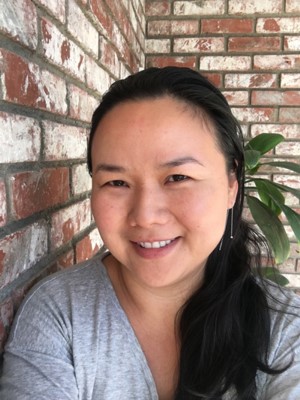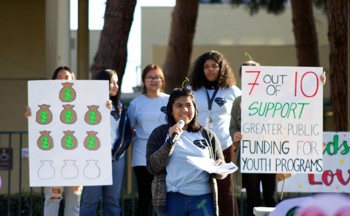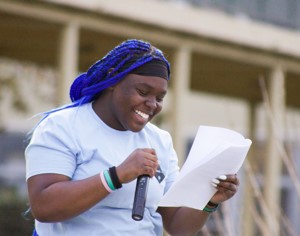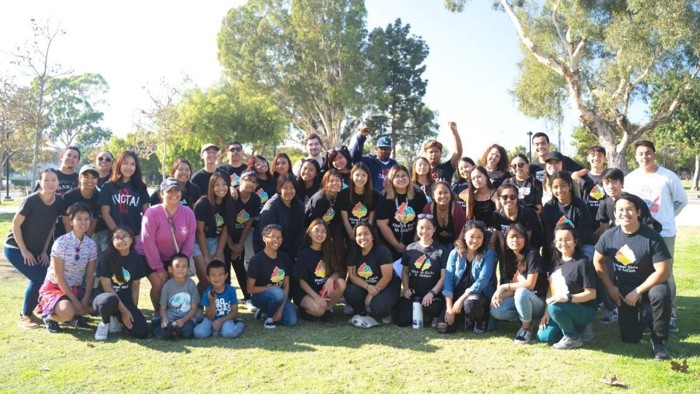GCIR President Marissa Tirona speaks with Lian Cheun, Executive Director of Khmer Girls in Action (KGA) in Long Beach, California, an organization working for gender, racial, and economic justice through community and power building efforts led by Southeast Asian young women.
Read on as Lian shares how her experience as a child refugee led her to this work, what successful power building looks like at Khmer Girls in Action, and how philanthropy can partner with grantees to co-design a new normal for our multiracial democracy in which immigrant communities, communities of color, women, and girls can truly thrive.
My family left Cambodia in the 1980s after the genocide, and I spent the first few years of my life in a refugee camp on the Thai border. Both the experience of being a refugee and the resettlement experience were traumatizing and shaped who I am today. After we arrived in the U.S., we settled in a low-income, diverse neighborhood in East Oakland. As a teenager, I was seeking community and a way to have an impact, so I got involved in youth organizing, and that was my first exposure to power building. I was mentored by adults who celebrated the vision and voices of young people, and this eventually led me to Khmer Girls in Action when I moved to Southern California. We are a youth organization in Long Beach working with 1.5- and second-generation Cambodian young women and other Southeast Asian girls, and we center a leadership pathway for these young people.
Which individuals and experiences have influenced you?
The many strong women I was surrounded by growing up were a huge influence on me, but my biggest influence and source of support has always been my mom. Even though she has been through so much, she shows her love in so many ways, including through food. I have a vivid memory of stealing papaya salad in the refugee camp in Thailand. Even today I drool at that memory, of being so hungry and just stuffing my face. Because we faced that starvation, my mom always makes sure that everyone has food if they enter our home. Other women in the community fed us too, taking care of us behind the scenes and ensuring our bellies were full while we learned to organize. This touched me deeply and has a huge impact on my work to this day. Every time we have a meeting at Khmer Girls in Action, we make sure everyone has food. It’s an important cultural and community practice to us.
What is your strategy and experience in building the power of young people? What have you achieved as a result?
Our youth members have used their power to strategically build toward important victories over the past several years. In 2017, we conducted a survey and held the first-ever youth budget hearing where we discussed priorities for young people in the city. We surveyed 750 city residents, and seven out of ten of them said they wanted the city to support more youth development work. Eight out of ten respondents said they believed that youth programming made the community safer, versus 17% who reported that they felt the police made them safer.
Our young people have also leveraged their power to talk to voters. Most of our base are high school students who cannot vote yet but who do phone banking or door knocking to get people to submit letters to public officials or vote. In 2020, KGA called voters to educate them about a ballot measure that would institutionalize funding infrastructure for youth, racial justice, and climate resiliency programs in Long Beach. The measure was approved by over 60% of voters. Through this phone banking initiative, we built a broad base of young people to reach voters, and we built on the relationships that had been established to collect 700 letters to the mayor from constituents asking that he allocate a portion of incoming federal dollars to fund equity programs. All of that to me is part of power building and what it takes to build the infrastructure to power the ongoing conversation.
Finally, when we win, we think about the implementation piece as an opportunity for co-governance. How government generally functions is not youth-friendly. But in the case of the new office of youth development, the youth in the community played a central role in shaping its culture and operational practices by, for example, being involved in the hiring process. This is an important piece of power building—literally shifting the institutions working with young people and having young people shape what those institutions will look like. This type of engagement builds youth consciousness of how public resources are allocated. It shows the city that our youth are an essential part of shaping solutions, and it prepares our youth to fight for an equitable post-Covid recovery for our community members.
What do immigrant youth bring to the movement to advance justice and equity in your city? Why is helping young people, especially black and brown youth, build their power important?
Youth have a unique ability to build power, and they bring something to our work and our movement that no one else can. Although they are excluded from major decisions that impact them, young people are essential to the health and well-being of our communities. Immigrant youth in particular serve as advocates for family members who may not speak English, bringing them essential information like how to stay safe and access resources in the face of Covid-19. In this way, young people serve as a bridge to hard-to-reach communities and help ensure equitable health outcomes. Youth are also key to civic engagement. Although they can’t vote, our youth get essential information to those who can.
What do you need from philanthropy? What does philanthropy need to know about power building strategies?
Philanthropy should think about how our partnership could deepen at this time and what it means to invest in the power-building forces that will hold our government and politicians accountable. Political actors come and go, but engaging with and challenging government power as an institution is an important area for philanthropic investment.
Philanthropy should also invest in interesting pilots, especially when it comes to Covid recovery for communities of color, immigrant communities, women, and young girls. But we can’t give up hope if something doesn’t work the first time—we need to have the space to regroup, be responsive, and pivot when needed. What we know for sure is that we can’t go back to what normal was before Covid, because that didn’t work for so many in our communities. Our communities need to be authentically engaged in rebuilding and co-designing a different world post-Covid. The young people I work with push me to think big as we consider the future of our multiracial democracy and what that looks like in practice. The pandemic exposed so much systemic inequality—it was a political flashpoint. When we do have those moments, our organizations are ready to take advantage of them and use them to make change.
With the new administration we have an opening to advance racial, social, and economic justice. We need to ask how we can support those who are ready to leverage that opening to run with our vision. I see so much possibility in this moment, with both the political opening and the urgency of the pandemic pushing us to make important shifts. It’s a good time to test out new approaches and to dream big. We can do it on the ground but also in partnership with philanthropy.
On the topic of taking advantage of this political flashpoint, how can philanthropy support an organization to be in that state of readiness?
I am thrilled when funders come to us and say they want to give us multi-year, flexible grants. I can’t begin to explain how much that helps us to be nimble and have the resources to shift when we need to. It’s hard to see long-term results with short-term investments. Philanthropy needs to invest in the long-term sustainability of organizations, especially those on the front lines who are rooted in the neighborhoods and serve as a lifeline for communities. Long-term flexible spending is essential—it allows our funders to truly be our partners. When that type of partnership is in place, we don’t have to perform for each other; we can be in genuine discussion about the work and what it’s going to take to make an impact.
What is the story you want to tell us about the work in five years in Long Beach?
Five years from now, I want our young people to take over the city. I want to see the self-determination of our communities—communities that are free from violence and oppression. I believe we can get there. I can almost taste it. When you come visit us in five years, we’ll have a big Cambodian meal together, and you will be walking into a place of loving community that’s thriving. And you will be welcomed with open arms.





